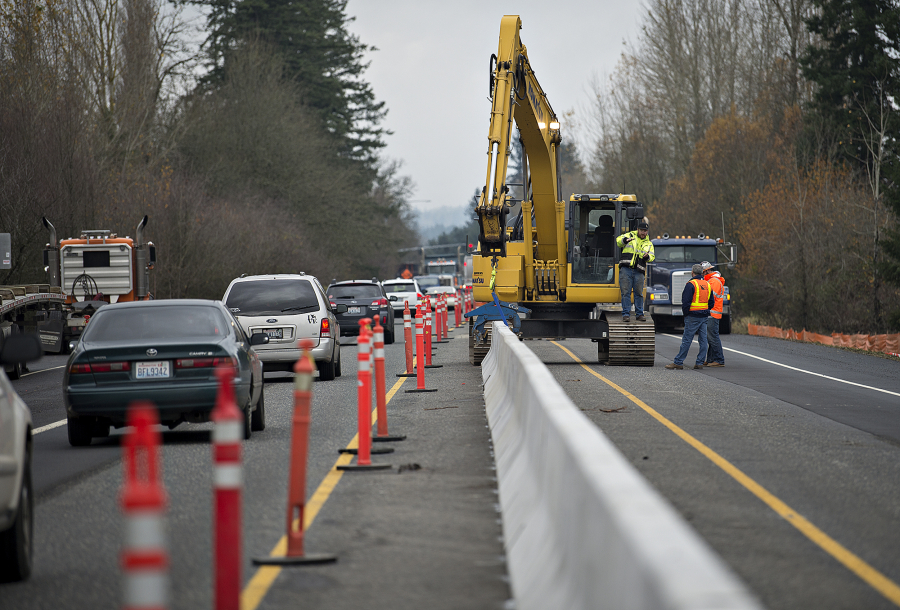OLYMPIA — Speed enforcement in work zones will soon become more advanced.
Gov. Jay Inslee on Tuesday signed into law Senate Bill 5272, a bipartisan bill authorizing the use of automated camera enforcement in work zones on state roads, responding to pleas from labor to crack down on drivers zooming dangerously close to crews.
“Folks working on our state highways deserve to do so with the peace of mind that they will end their shift by going home to their families and loved ones,” said Sen. Marko Liias, D-Lynnwood, bill sponsor and chair of the Senate Transportation Committee. “These workers are acting every day to ensure our highways are safe for commuters, and we have a duty to keep them safe as well.”
The cameras won’t be deployed until July 2024, and when they are, drivers will have plenty of warning in the form of signs.
The Washington State Department of Transportation is still finalizing the rules and details of the rollout. This new authority only applies to WSDOT work zones on state highways.
Like in school zones or at red lights, violators will receive a ticket in the mail within 30 days of the alleged violation. Unpaid tickets will be referred to the state Office of Administrative Hearings.
The cameras will only be in use when workers are present, meaning drawn-out and sometimes dormant construction zones — such as the decadeslong work on Interstate 5 near Tacoma — won’t always be under watch.
Material gathered from the cameras can only be used for speed violations; footage can’t be used in parallel criminal investigations. This restriction is similar to the limits placed on red light, HOV and school cameras, which have caused friction in the past. When Robb Mason was hit and killed on his bicycle near the lower West Seattle bridge, Seattle police could not use a nearby camera in its hunt for the driver, who left the scene. A driver was eventually arrested.
The push for cameras in work zones was one piece of what legislators billed as a suite of legislation meant to make state roads safer. Nearly 750 people died on Washington roads last year, the most in more than 30 years.
In 2021, the latest numbers made public by WSDOT, there were five deaths in work zones, nearly 30 serious wrecks and nearly 1,000 crashes that damaged property.
Some major parts of that suite have stalled out, likely for good this year, including a push to lower the blood alcohol limit to 0.05% and a proposed ban on right turns on red.
Work zone cameras, however, had broad bipartisan support, passing unanimously in both the House and Senate. Sen. Curtis King, a Yakima Republican and a ranking member on the Senate Transportation Committee, noted early in the legislative session that, under most circumstances, getting Republicans to support additional cameras would be a stretch, but that he’d heard from enough workers in his own community to back the idea.
“In recent years, we’ve seen too many injuries and even fatalities in our highway work zones,” King said. “Speeding and distracted driving are the main causes of these tragic events. Placing speed cameras in our work zones can be an effective way to deter drivers from causing a serious accident.”
WSDOT has recently made changes to its work zones to decrease collisions, most noticeably closing additional lanes to create a wider buffer between traffic and the work.
Automated camera enforcement has expanded in the state in recent years. As of last summer, it’s allowed without limit near schools, parks and hospitals. Cities are also allowed to install a limited amount, determined by population, in areas where other safety efforts have fallen short. Seattle has also rolled out automated enforcement against drivers who “block the box” — crosswalks or intersections — or use lanes dedicated to transit. Cameras at red lights have been allowed in the state for years.



